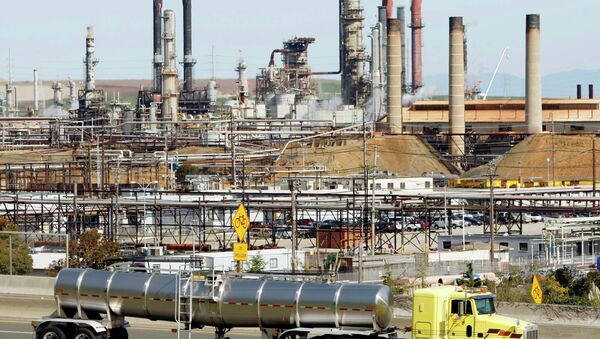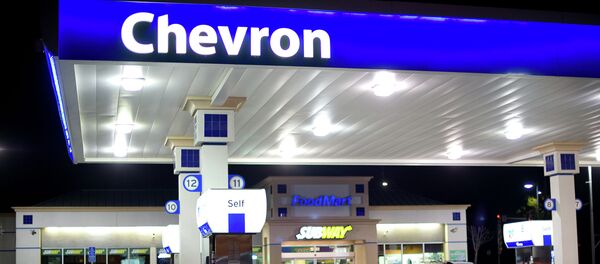“We understand that the community has been concerned about the flaring activity,” San Francisco Gate quoted Chevron spokesperson Heather Kulp as saying. "We had a process unit that needed to be depressurized, creating a visible flare. The flare is part of our safety system which enables [us] to safely shut down a unit," she explained.
We had a unit that needed to be depressurized, creating a flare that is part of a safety system which enables us to shut down the unit (2/4)
— Chevron Richmond (@ChevronRichmond) 19 декабря 2014
The flare at Chevron refinery, one of the top 25 largest in the United States, was reported around 7:30 p.m. local time [3:30 a.m. GMT], causing growing concern of the residents who started posting pictures of the blaze in social media.
#Chevron says “flare” is “normal”. Huh, air stinks in N. Bay. http://t.co/B7d3kd6qja #Breaking pic.twitter.com/3LbkkKLr4N
— Abrahm Lustgarten (@AbrahmL) 19 декабря 2014
According to Randall Sawyer, director of Contra Costa County's Hazardous Materials program, cited by the San Jose Mercury News, there had been five separate flares, and the biggest part was extinguished by 8:30 p.m. [4:30 GMT]. Residential areas around the refinery were not affected.
Flaring has stopped at Chevron though it may intermittently occur tonight. Our HazMat staff determined a shelter-in-place was not needed.
— Contra Costa Health (@CoCoHealth) 19 декабря 2014
Population anxiety comes after the August 2012 massive fire at the refinery. Smoke spreading from that fire saw over 15,000 residents visiting local hospitals complaining of breathing problems. After the incident the Chemical Safety Board recommended that California strengthen its safety management regulations for refineries.
Pic from my back patio of @chevron Richmond refinery. I bet they'll call it "flaring." I call it #roguecorporation pic.twitter.com/d1o250F2jt
— Jeremy Miller (@JeremyJ_Miller) 19 декабря 2014



